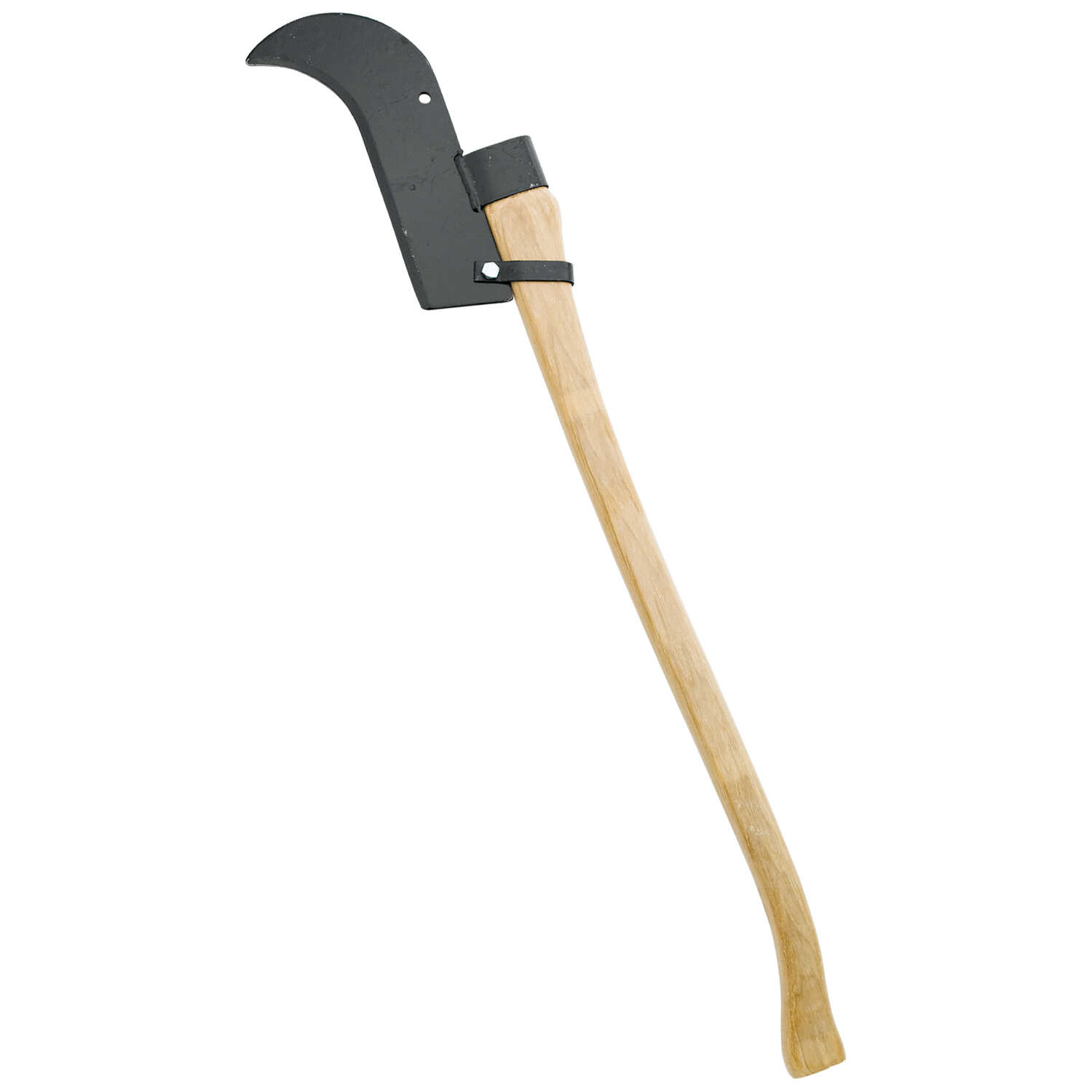The largest Billnäs billhook that I´ve ever seen, either live or in literature:
https://postimg.cc/gallery/VL8zLbv
Number 55/1 has been stenciled on the handle, which would make it a version of the model 55 shown on page 19 in the Billnäs catalog of 1928
https://digi.kansalliskirjasto.fi/pienpainate/binding/338807?page=19
The billhook is of two hand-pattern, has a birch handle, weighs 2,1 kgs and is 102 cms long. The haft tube and the blade have been welded together instead of forging them as one piece. Based on this and the Billnäs decal I would guess it´s from the 1950s. Left side of the blade has the usual Billnäs & logo stamps. Its condition is superb i.e. it has never been used.



